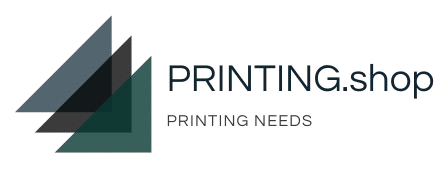Textile printing is a centuries-old craft. Naturally, throughout these years, the field of textile printing has advanced considerably. From hand-block printing to digital printing: the process of fabric printing has evolved more quickly and efficiently, resulting in higher-quality textiles. The possibilities are now endless. Are you interested in learning about the many types of industrial textiles that can be used for patterned fabric creation? We’ve listed the five most common types of textiles printing and their key advantages below.
Fabric Printing on a Copper Roll
The invention of copper role printing, which is also known as copper roller printing, was the next step in textile printing. Copper roll printing is a form of textile production that uses a role to print designs on fabric at a quicker rate than hand-block printing. A role is used to create designs on cloth using copper roll printing. The pattern is etched onto the copper coil with ink and then applied to the cloth. A piece of linen is rolled over the copper cylinder, leaving a pattern as a result. Copper roller textiles allowed people to create larger quantities of fabric faster than hand-block textiles did.
Hand-block Printing on Textiles
Hand-block printing is the oldest and most basic form of textile printing. Humans have been using this technique to print designs on textiles for decades. A wooden block with a pattern carved into it is dipped in ink and then pressed against the fabric. If the print is made up of several colours, the block must be struck onto the cloth numerous times. A hand-block printer makes sure that each imprint matches exactly to its neighbours.
Screen Printing
The process of screen printing on textiles involves layering mesh over the substrate. Users may print designs on textile by closing the gaps in the mesh at locations where no ink should seep through. The procedure for fabric printing is as follows: a template is produced by closing the holes in the mesh at places where no ink should seep through; then, using this pattern, textiles are printed.
Rotary Screen Printing
In 1963, Stork (now known as SPGPrints) created a breakthrough in textile printing with the invention of rotary screen printing. Instead of using a flat screen, rotary screen printing makes use of a round, seamless one. Users may produce larger textiles at quicker speeds because of the use of circular screens.
The lacquer is first applied to the screen, followed by the opening of the necessary holes. This was previously accomplished by coating the light-sensitive lacquer with a film, but most screens are now laser engraved. The printing paste is inserted into the screen and forced through the openings using a squeegee on end.
Digital Textile Printing
The main disadvantages of rotary screen printing are the expenses and time involved with engraving new screens for each design. A very time-consuming and expensive procedure. There was a need for a more efficient printing method that could produce results faster and at lower costs.
Traditional methods of textile printing could not produce the intricate designs seen in today’s high-tech textiles. Digital textile production filled this gap by allowing manufacturers to directly print a digital pattern on cloth. There is no need for a screen with digital textile printing, saving money while also allowing producers to produce one-of-a-kind patterns rather than designs that repeat every rotation of the screen (typically 64 centimetres).
Instead of using screens, digital textile printers employ print heads that move across the cloth from left to right (scanning printers) or are positioned over the whole width of the fabric (single-pass printers). Textile printing may be performed immediately after design upload. This allows manufacturers to react quickly to trends because designs can be altered without investing too much time and money.
Digital textile printing is the most recent advancement in textile printing, and it is gradually finding its way into the sector. The transition to digital textile printing has been completed by roughly 5% of the textile industry at this time. The speed, ease of design customization, high image quality, and limitless colours are among the primary advantages of digital cloth printing.
Choosing a Textile Printing Process That Is Appropriate for You
The first step in selecting a textile printing process is to understand what’s available and what best meets your consumers’ demands. Do your customers want to rapidly generate several designs in order to keep up with the latest fashion trends? Then, depending on your needs, digital textile printing may be an excellent choice.
Adalberto Estampados, a textile manufacturer, also faced similar obstacles. They were concerned about how to meet the fast-fashion industry’s growth, create more challenging designs, and provide new standards of quality and production efficiency. They were able to fulfil their clients’ needs thanks to digital printing.
